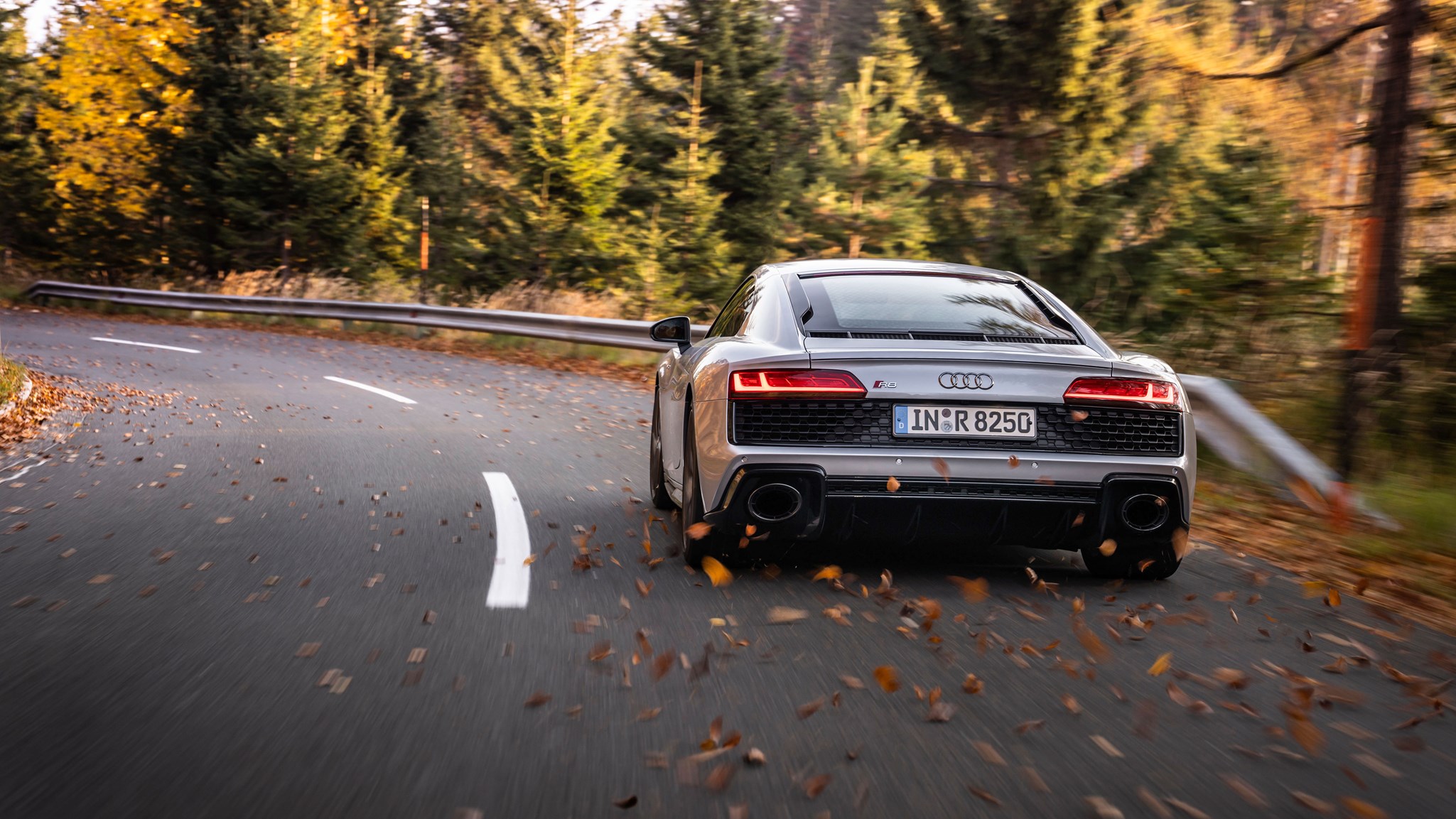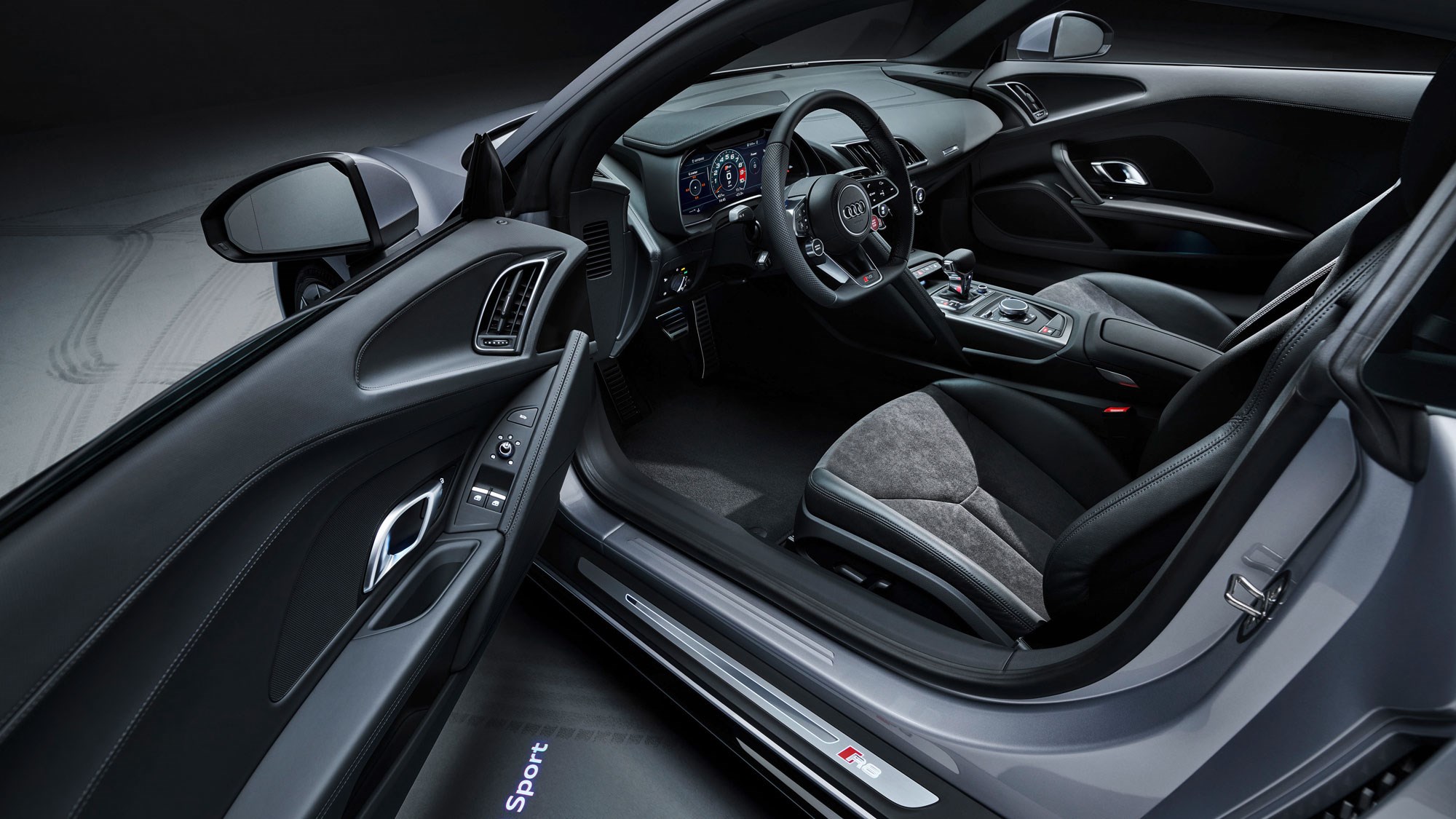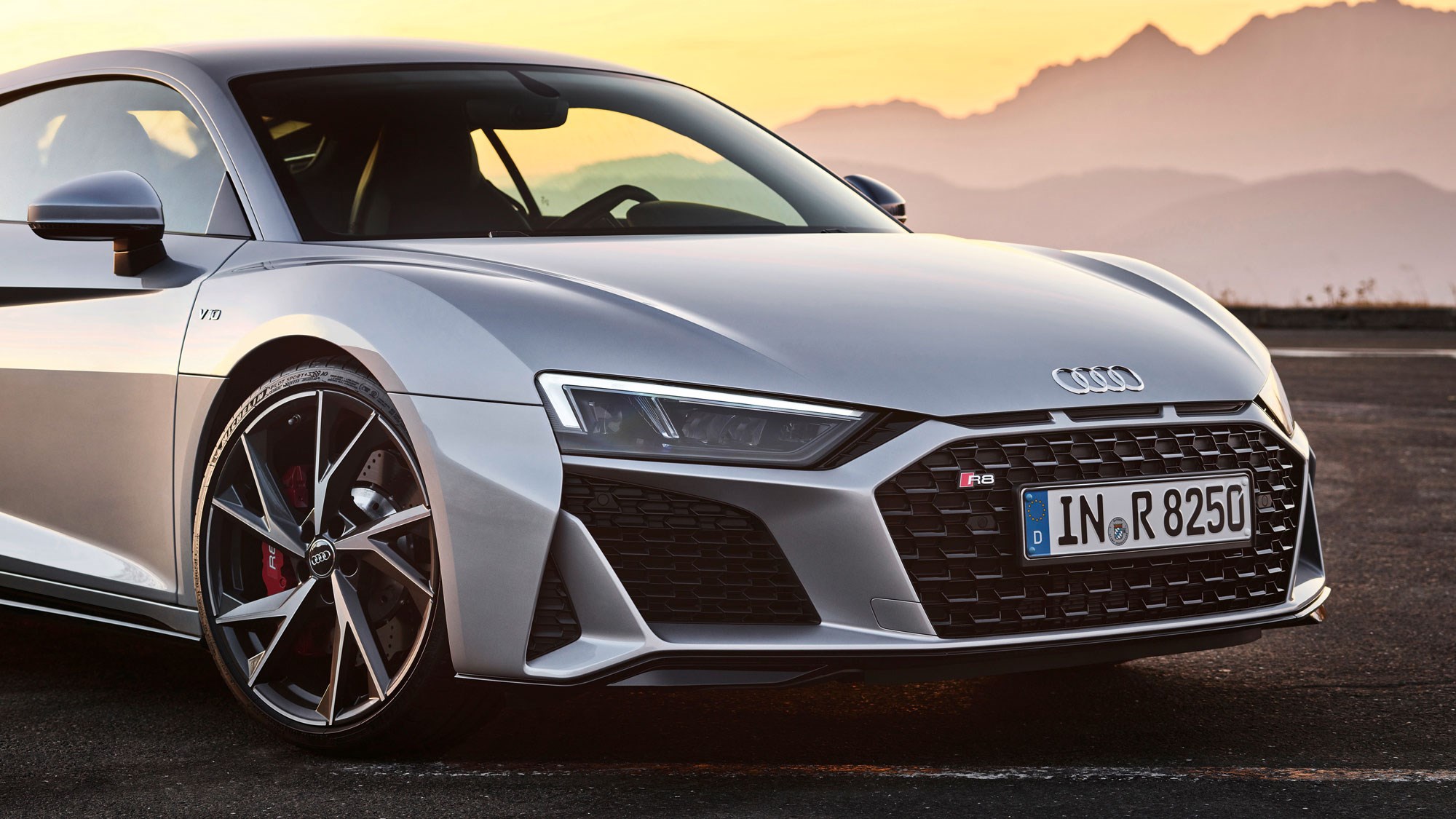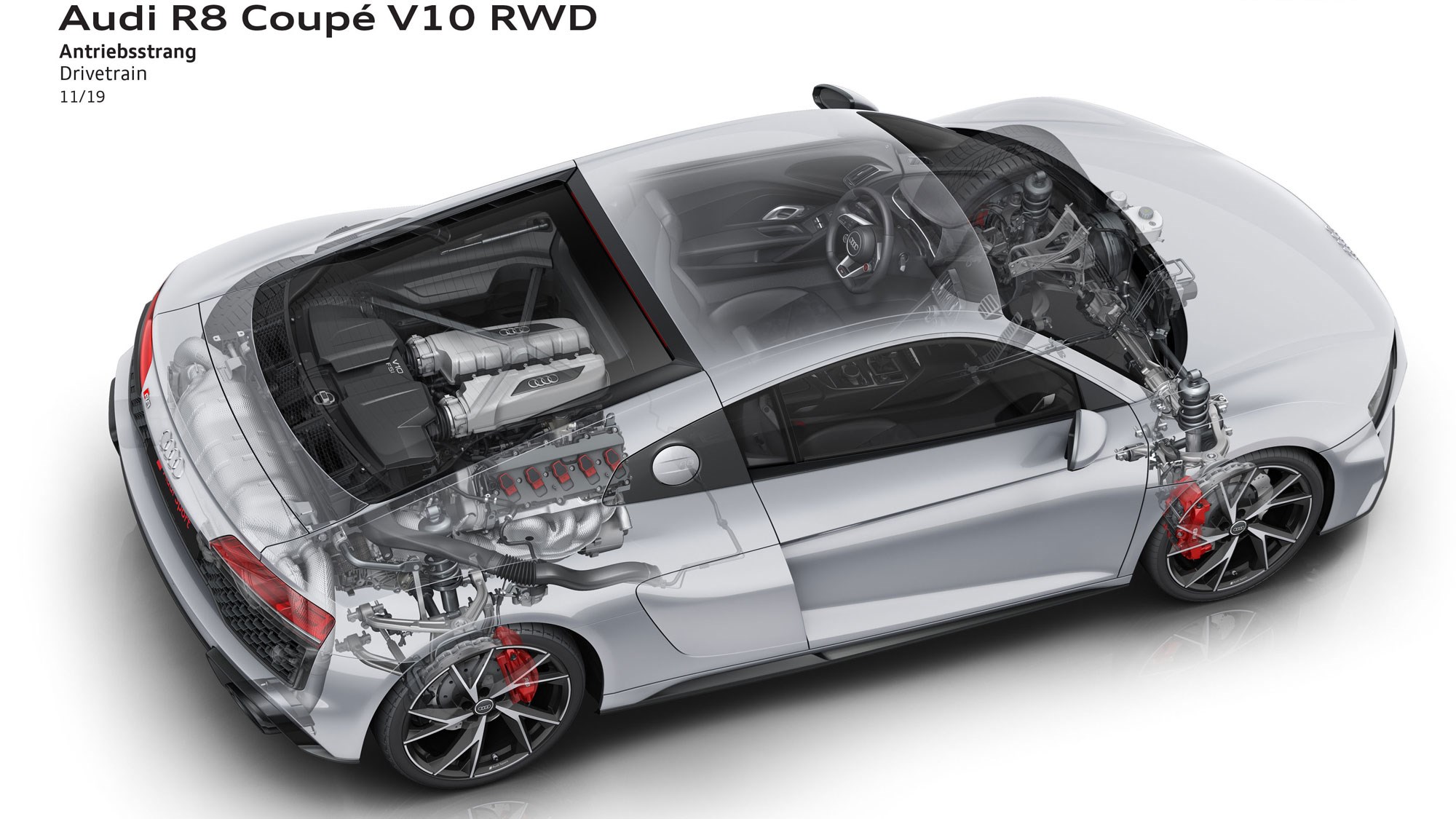► Audi R8 RWS becomes RWD
► No longer a limited series
► New entry point to the R8 range
There are two ways to look at this car. It’s either a more affordable, mildly ‘decontented’ entry-level R8, or it’s a missed opportunity for a pared-back, focused R8 for hardcore drivers. In some ways, both viewpoints are right.
As the name suggests, the R8 RWD is a two-wheel-drive version of Audi’s super sports car.
The R8 range as a whole got updated for 2019; now it’s the rear-wheel-drive variant’s turn.
Is this the artist formerly known as the Audi R8 RWS?

Yes, pre-facelift the two-wheel-drive R8 was called the RWS, for Rear Wheel Series. Since most of the automotive world associates that acronym with rear-wheel steering, it’s sensibly switched names to RWD, for, well, you can guess.
Losing the word ‘series’ from the name also signifies that the rear-drive R8 is no longer a limited-edition model. Whereas the RWS was pegged to 999 cars, the RWD is a permanent fixture in the R8 line-up for the remainder of its lifecycle. Whether that leaves RWS owners feeling a bit miffed remains to be seen.
You can read CAR’s review of the older R8 RWS here, and a comparison test between it and McLaren’s 570S here.
So what’s new, apart from the consonant swap?
In line with the rest of the R8 range, retuned power steering and suspension (with further setting tweaks in deference to the rear-driven configuration), new oval exhausts and pointier front bumper styling, among other minor details.
The R8 RWD is available as either a coupe (tested here) or open-top Spyder.
It’s the entry point to R8 ownership, at around £116,000. At the time of writing, it’s roughly £13,800 cheaper than a ‘normal’ all-wheel-drive R8 Coupe, and £26,800 less than the top-dog R8 Performance. (It’s also more than £50k cheaper than the faster, more dramatic Lamborghini Huracan RWD.)
Like the R8 RWS, that price difference is partly because it’s less powerful than the regular R8. The RWD’s V10 turns out 533bhp to the standard R8’s 561bhp and the range-topping R8 Performance version’s 612bhp (although the quoted figures for all three are thought to be conservative)
You’d have to be particularly macho to declare this car slow, however. It’s still quick enough to make grown adults giggle and swear, and the turbo-free V10 (shared with the Lamborghini Huracan, along with much of the R8’s architecture) remains one of the last great supercar engines in production. Performance figures are in line with the RWS, at 3.7 seconds to 62mph (a tenth slower for the heavier Spyder) and 199mph. Peak torque now arrives at slightly lower rpm for a shade more in-gear urge, helped by a slightly lower kerb weight than the RWS.
Losing chunks of drivetrain means the RWD Coupe weighs around 65kg less than the equivalent all-wheel-drive R8. Despite deleting the front driveshafts, the boot compartment in the nose shares the same titchy dimensions, presumably because the cost of packaging a new luggage area and incorporating it into the production process wouldn’t have made financial sense for a relatively low-volume car. It’s a shame, as the small luggage capacity is one of the few things that counts against the R8 as a long-distance, everyday supercar. That, and a relatively large nearside blindspot in rear vision, are pretty much the only things that might stop you using this car day-in, day-out.

The RWD is just as user-friendly as the regular R8, then?
If you were expecting a wild, swat-flies-with-the-side-windows experience, the R8 RWD isn’t it. It’s as smooth, urbane and well-behaved as the other models in the range, and in the dry, you could be forgiven for not noticing it’s rear-wheel-drive at first. The steering is a fair bit lighter and more direct than the regular car but otherwise it feels very similar to other R8 variants.
Traction is still excellent, especially given that the traction control has been retuned for the RWD and calibrated very much on the cautious side. In partway-off Sport mode, however, it allows a fair bit of movement.
In keeping with the RWD’s ‘budget’ positioning, it can’t be specced with adaptive dampers or ceramic brakes. The RWD’s ride comfort on the passive dampers is superb, particularly at urban speeds, and less choppy than the R8 RWS (if memory serves faithfully – admittedly, it’s around two years since we last tested that car). The RWD is a soft car by supercar standards (enough to briefly ground out on one particularly bumpy stretch of B-road) but it doesn’t feel clumsy.

The steering isn’t as full of feel as a Porsche 991.2, for example (and you might want to dial up its heft using the drive modes switch) but it is responsive, and its standard ratio feels well-judged. The variable-rate Dynamic Steering option available for higher-spec R8s can’t be specced for the RWD – no great loss.
As well as the spookily comfortable ride, Audi has also made strides in refinement for the facelift, the RWD being far quieter at a cruise than other R8s we’ve tested.
The wavy-edged steel brake discs aren’t as grabby from cold as the ceramics fitted to our old long-term R8 Plus but the pedal response is a little over-servoed (a common trait of fast Audis) and the ABS can be triggered disconcertingly early sometimes on bumpy roads, even at relatively light pressure underfoot. Once you’ve tuned in to them, they’re fairly easy to modulate, however.
The interior, while still a comfortable cut above most cars, is now beginning to feel its age; the Virtual Cockpit graphics which wowed so in the TT at launch half a decade or so ago now look blocky and dated but the system remains as intuitive as ever.

R8 RWD or R8 quattro?
The all-wheel-drive R8 is a strongly rear-biased car as it is, and the way it digs its front fingernails into the tarmac and hauls itself out of corners on slimy, winter roads is an alluring part of its character. But the RWD’s extra sense of directness, less corrupted steering and simplified ethos makes this entry-level R8 the most alluring of all. It’s the one we’d choose.
Back to that original question, as to whether it goes far enough. There is a sense that there’s still headroom for a harder, more focused R8, in the vein of the Lamborghini Gallardo Balboni or a GT-division Porsche. But whether there is a desire among R8 buyers for such a car is another matter. On the right road, you might crave the RWD had sharper claws and a bit more communication and engagement. But the other 98% of the time, its driver can revel in its sheer usability and friendliness. That, and the sense of perhaps the greatest engine in series production today being connected solely to the rear wheels. It’s a deeply likeable car.